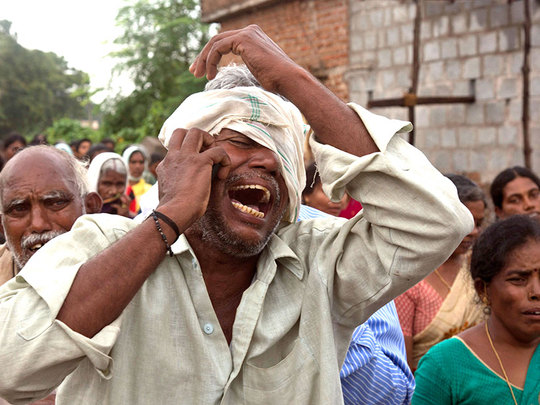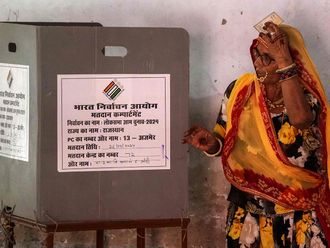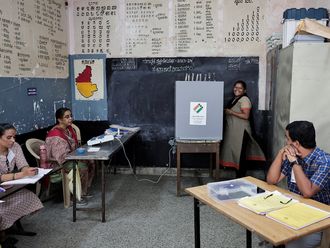
Hyderabad: The worst ever road accident in the history of Telangana and Andhra Pradesh, which claimed 57 lives on Tuesday, has left the people of Jagtiyal district and surrounding areas in tears and gloom.
More than 24 hours after the accident in which the Telangana State Road Transport Corporation (TSRTC) bus overturned and fell into a gorge near Jagtiyal town, bereaved families were cremating their loved ones and local residents in a state of shock.
The worst affected is Shanivarampeta, where the bus started out from. 15 from this village were killed in the accident. Many other villages like Tirumalapur, Himmatraopet, Ramsagar and Dabbutimmayapally were also mourning their dead, as the bodies of the dead were handed over to their family members by the authorities at Jagtiyal hospital.
Facing an unprecedented tragedy, the local medical care centres were not equipped to face a disaster of this magnitude, or had the facilities to preserve so many bodies. The district ran out of cold storage and air-conditioned coffins to keep the bodies in. As a last resort, the government hospital staff placed the bodies on ice blocks, to keep them safe till they were handed over for cremation.
The administration and local people extended a helping hand to the bereaved families, in performing the last rites.
Meanwhile, medical teams and experts were dispatched from various hospitals of Hyderabad to Jagtiyal and Karimnagar, where more than 30 injured people were being treated.
Most of the victims were women, 23 of them aged between 50 to 75. E Neeraja, 25, who was pregnant, succumbed to injuries at Karimnagar hospital. Another pregnant woman was injured and is undergoing treatment.
Buses, roads in poor condition
Meanwhile, the state’s worst ever accident has brought TSRTC into sharp focus, with the buses’ poor condition being blamed for the tragedy.
While the accident’s real cause is expected to come out in a probe currently underway, many at TSRTC suspect that the brakes of the ill fated bus might not have worked properly. The bus started operating in 2007 and had logged nearly 15,00,000 kilometres, against the maximum limit of 12,00,000km.
Sources at the corporation allege that many buses aren’t even fit to ply. “While ultra modern and luxury buses are run on major routes linking important cities and towns, the buses on rural routes are pathetic,” admitted a TSRTC retired official.
While the top officials insist that buses were run only when they are certified as fit for operation, others allege that such certificates were “managed”.
TSRTC’s principal secretary Sunil Sharma admitted that at least 1,000 of their buses are more than 10 years old, but that they’re maintained regularly and run only after they are certified fit.
It’s also alleged that duplicate, cheap quality and old spare parts were fitted in the buses on rural routes. Many drivers also complain of the condition of the roads. “Our complaints fall on deaf ears and are ignored,” a driver said, on condition of anonymity.
The Ghat road from Kondagattu — where the accident occurred — is also picture of disrepair as there were no proper signs to warn about sharp turns and road conditions. There are no barricades, even at the deep gorges, and speed breakers lack proper highlighting colours.
The talk is that rules were frequently bent and corners cut for the sake of savings. Due to rising fuel bills, the bus involved in the accident was encouraged to take a detour. Instead of a safer bypass, the bus was routed through the Ghat road, shorter by just 5km.
Human error was also blamed for the Tuesday morning horror. The driver, M Srinivas, was assumed to be inexperienced and only recently put on the route.
But it has turned out that he was a senior driver with 30 years experience, and a recipient of the Safety Award on Independence Day last month to boot.
Srinivas had applied for leave on health reasons, but it wasn’t sanctioned. Instead, he went on duty as usual, lost his legs in the accident and died later in hospital.












